The state of customer communications in 2025: What email marketers need to know
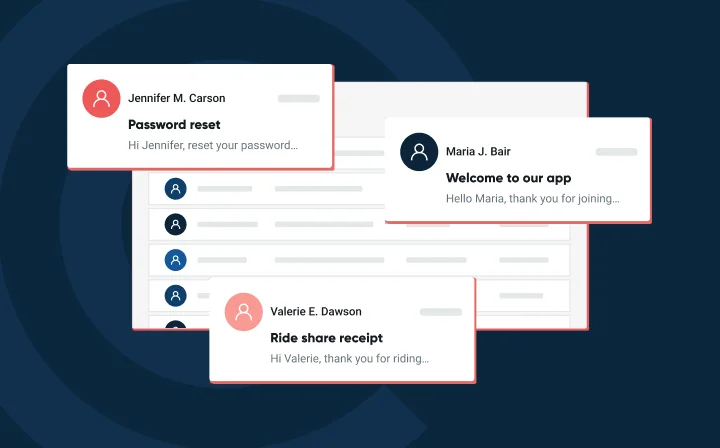

In the report, over 4,000 consumers and business leaders weighed in on the challenges and opportunities for customer communications in 2025. The top challenges? Security and privacy, (chosen by 44% of respondents), followed by cost (selected by 39%) and integration complexity (selected by 38%).
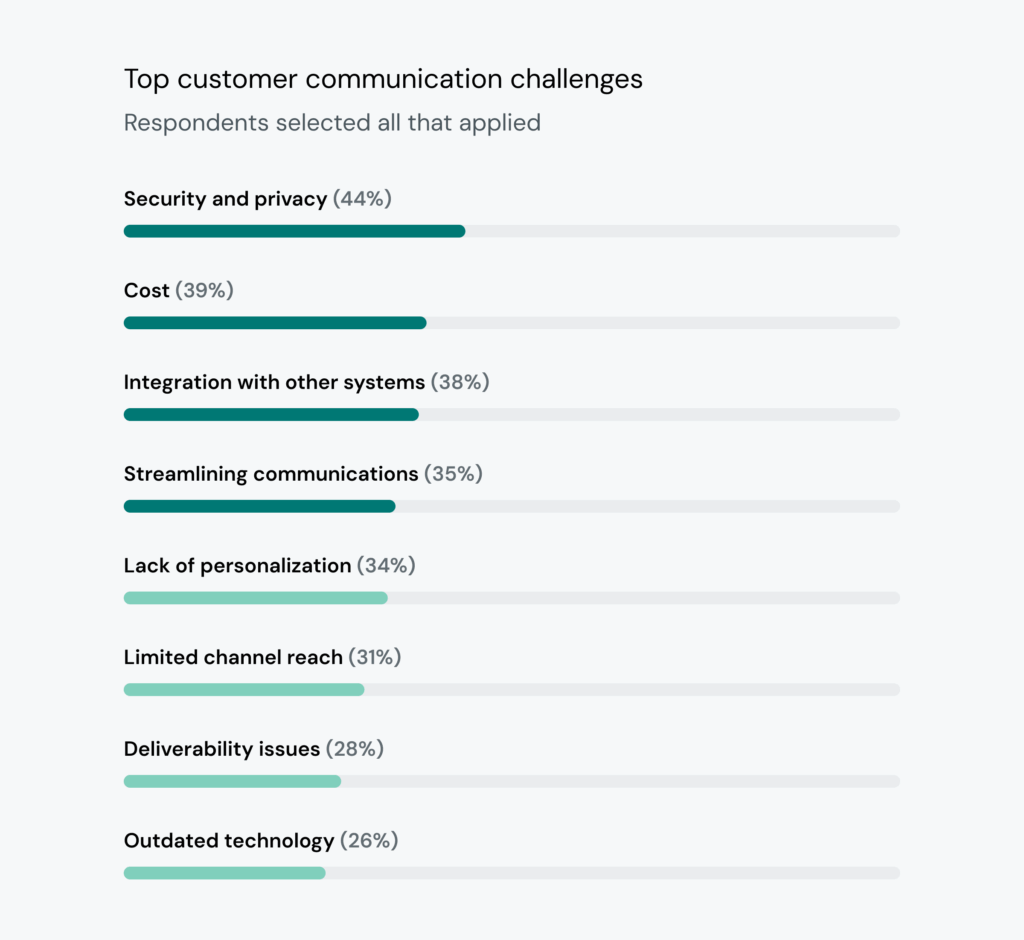
Together, these challenges show just how much pressure the inbox is under in 2025. If customers don’t trust your emails, they won’t open them. If your systems can’t talk to each other, you’ll miss key signals. If you’re wasting resources on ineffective messaging, your ROI will vanish. The inbox isn’t just a delivery point anymore; it’s a battleground for credibility, coordination, and cost-effectiveness. The path forward? According to the report – and what we’ve seen across thousands of Mailgun users – it comes down to three things:
We’ll break these themes down and show you how to turn today’s communication challenges into opportunities for smarter, stronger customer connections.
It’s tempting to think the problem is volume. Inboxes are just flooded these days, right?
Not quite. Volume isn’t the issue; alignment is.
You’re not just competing for attention. You’re navigating tighter rules, higher stakes, and thinner margins. Regulations like GDPR, SOC 2, and ISO 27001 mean your emails need to be secure, verifiable, and auditable. Meanwhile, your teams are juggling global rules, complex stacks, and growing expectations. Every message now has to earn its spot. And if it doesn’t? It’s ignored – or filtered out entirely.
When every message has to earn its spot in the inbox, better infrastructure isn’t a nice-to-have – it’s your best chance at impact. So, how can Mailgun help?
According to the report, email remains the backbone of digital communication in 2025 – reliable, scalable, and still the preferred channel for most consumers. 77% say they prefer email for promotions, 50% for customer updates, and 84% include it in their ideal multichannel mix.
Your customers’ trust is hard-earned, but it’s also fragile. Here’s the disconnect: 35% of people believe email is the least likely channel for phishing.
That’s… adorable. And dangerous.
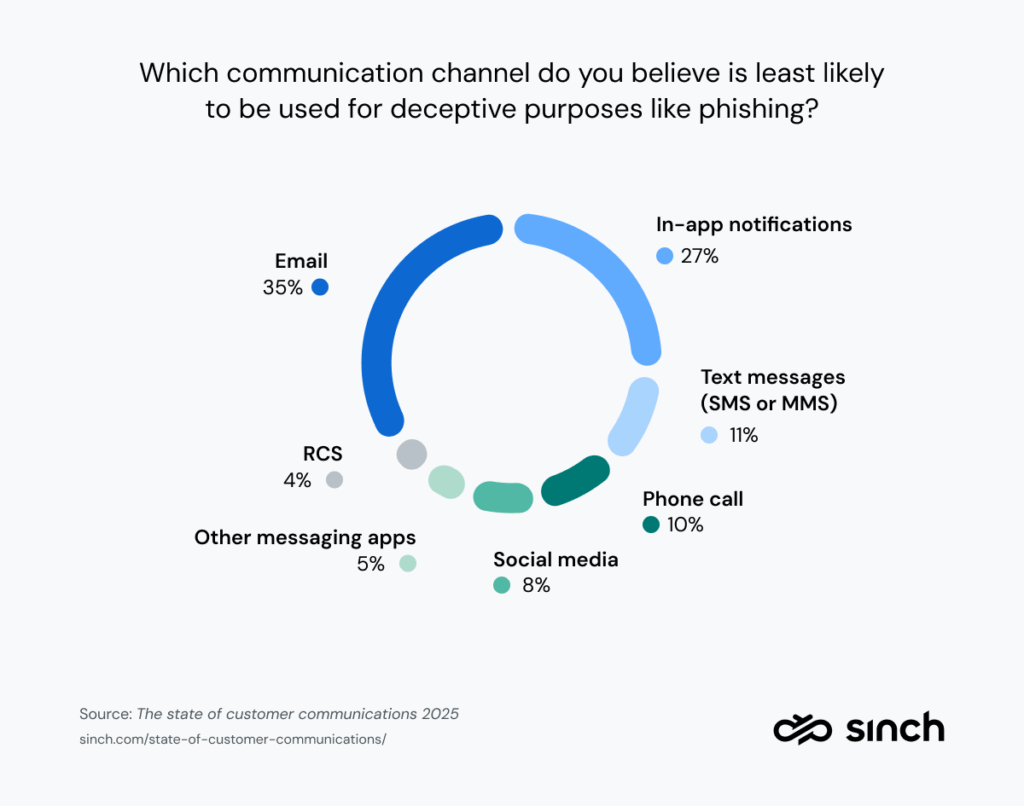
In reality, phishing is an issue no matter what channel. Over 3.4 billion phishing emails are sent every day, and spoofing is still a common attack vector, especially for brands without proper authentication. According to the report, 53% of consumers say they’ve received legitimate brand emails they didn’t trust. And the issue isn’t limited to email: 39% report receiving scam messages via messaging apps, proving the need for clear trust signals across every touchpoint.
“Spammers, scammers, and phishers love email because despite the risk, people still trust it. The best way to protect your subscribers (and your reputation) is to send email that’s so transparent, relevant, and respectful, they couldn’t mimic you if they tried.”

That’s your wake-up call. Because if recipients don’t trust your messages – even when you’re doing everything right – your open rates, clicks, and ROI suffer.
Email may carry the bulk of the phishing burden, but inbox providers are fighting back. Gmail, Yahoo, Microsoft, and others are tightening sender requirements, enforcing DMARC, and adding visual trust indicators like BIMI and blue checkmarks to help users quickly spot legitimate senders. These efforts are working to rebuild confidence in email.
Here’s how to close the gap between “secure” and “perceived as secure”:
Why it matters:
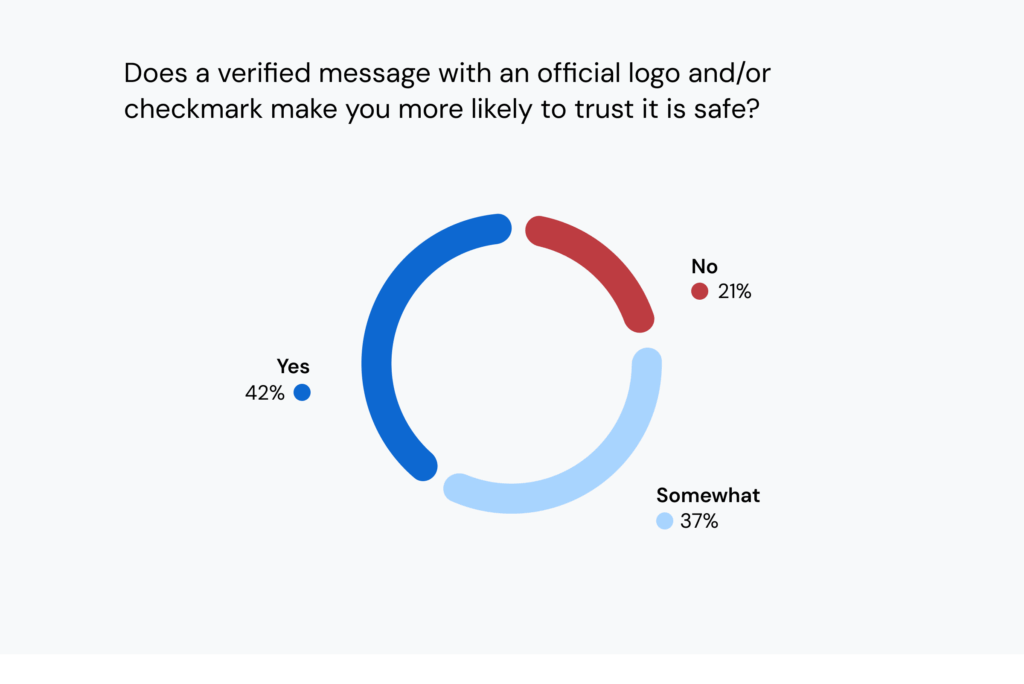
Consumers may think email is safe, but it’s up to senders like you to keep it that way. The inbox only stays trusted if brands actively work to protect it.
Omnichannel messaging – that is, messaging that can reach any user, anywhere, anytime, with any message – certainly sounds great… until it overwhelms. What most customers want is relevant messages, on channels they choose, at a cadence they can tolerate.
The report found that 58% of consumers want to choose how they’re contacted. But many also expressed frustration with messages that are irrelevant or too frequent.
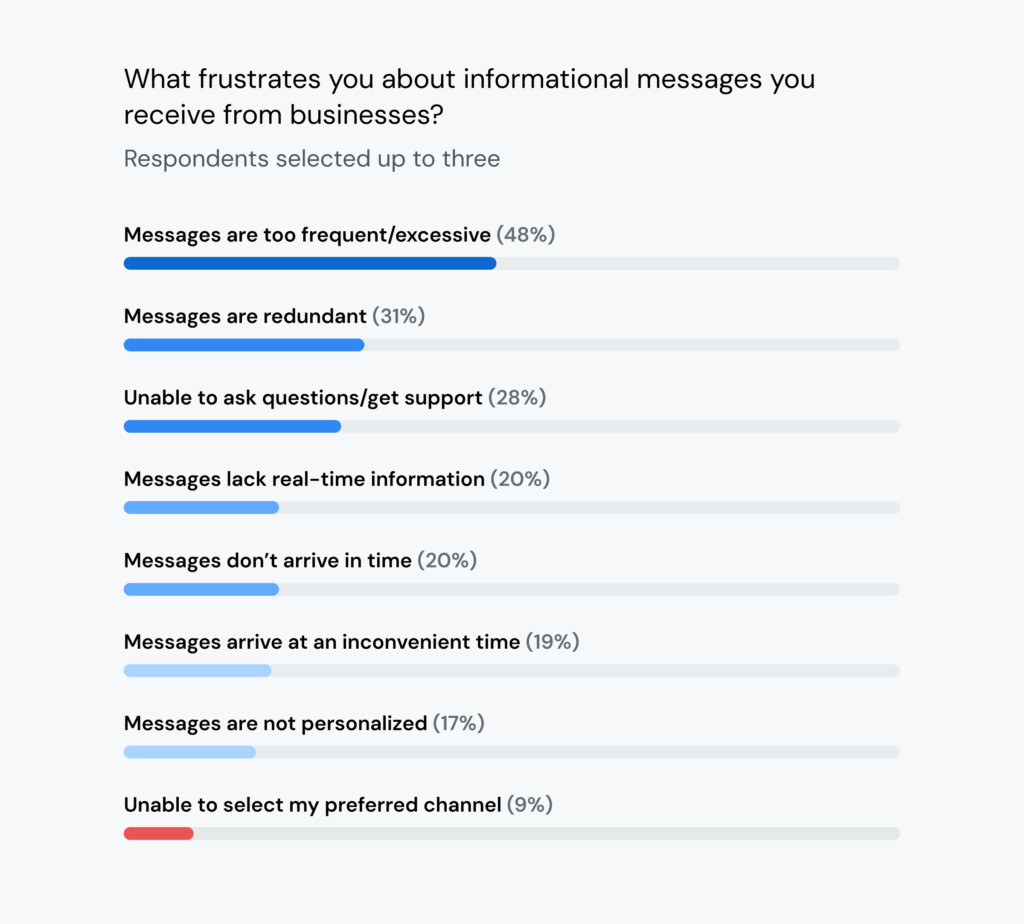
And when brands ignore those boundaries? Engagement drops, and trust erodes.
In other words: customers don’t want more messages. They want better ones. (For more insights on reaching customers, check out Mailgun’s Deliverability Academy).
Here’s how to avoid being that sender:
These aren’t just good manners, they’re deliverability best practices.
“Imagine you meet someone new, and you want to be friends. But instead of playing it cool, you text them 50 times in a row: ‘Hey.’ ‘What’s up?’ ‘Did you get my message?’ ‘Why aren’t you answering?’ It’s awkward. From an email perspective, some brands are doing that.”

Even as new channels like chatbots and SMS become more popular, email is still the preferred source for 75% of users to hear from brands. It remains the workhorse for key lifecycle moments: password resets, receipts, shipping updates, appointment reminders, loyalty rewards, and more.
But overuse (or poor use) can turn email into noise fast.
With Mailgun, you can clean your email list before sending, schedule emails based on real engagement signals, and steer clear of inbox fatigue. It turns email into your VIP lane – where quality beats quantity, and every message earns its place.
In 2025, AI is no longer a novelty, it’s a default feature. But the report shows that customers aren’t totally sold.
95% of businesses say they’re using AI, but don’t start singing “Kumbaya” just yet:
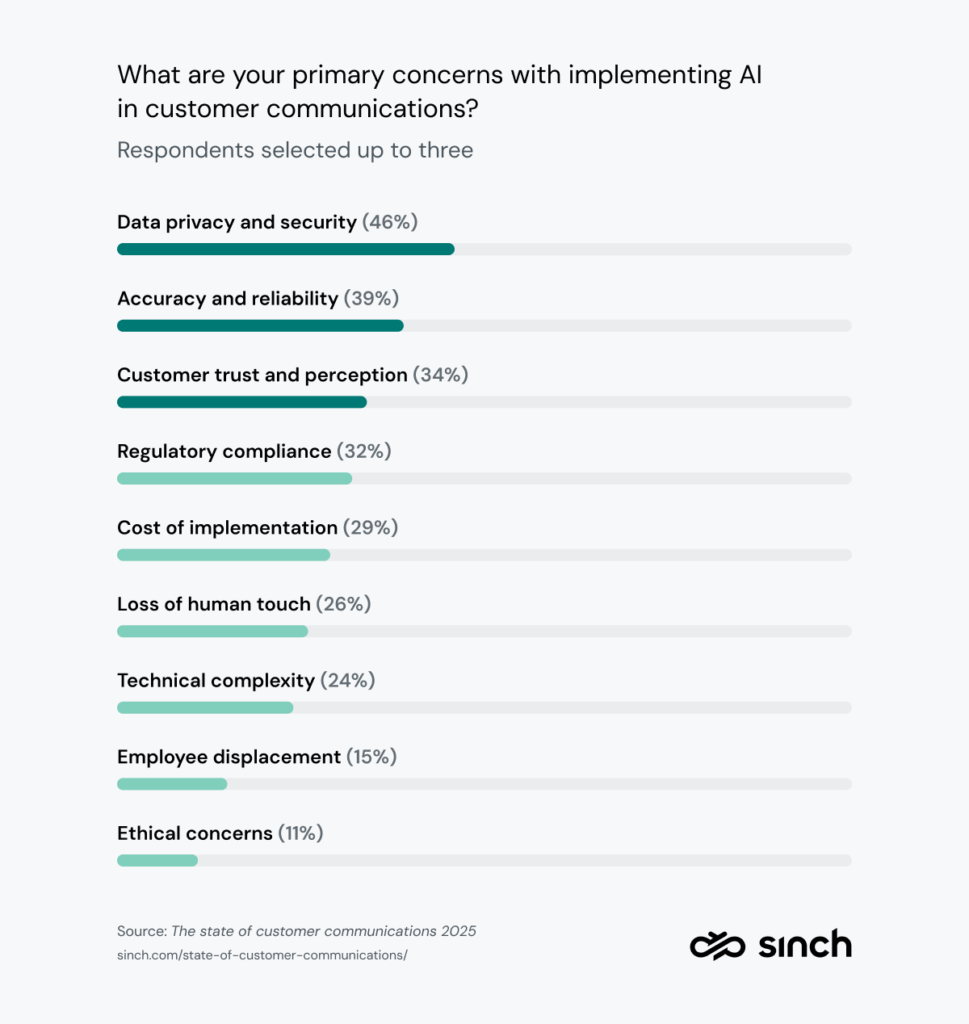
So, while AI might power your marketing stack, it won’t fix a broken strategy. If anything, it magnifies your weakest link.
How you apply AI matters more than whether you use it. Customers want personalization, not automation theater. They want relevance without creepiness, and they want to feel like a human is still steering the ship. So, how do you pull that off?
Here’s where AI does shine in email communications:
AI may boost your capacity, but it won ’t save you from bad messaging. Trust in AI comes down to how it’s used, and whether the outcomes feel respectful, timely, and transparent. It’s not about writing every subject line with a bot; it’s about using AI to listen better.
Full communication systems unification sounds great until you try to build it.
According to the report, only 55% of businesses say their communication systems are fully integrated. That means nearly half are still juggling disconnected tools, manual workflows, or brittle point solutions. The truth is that few teams have the time – or budget – to chase perfection.
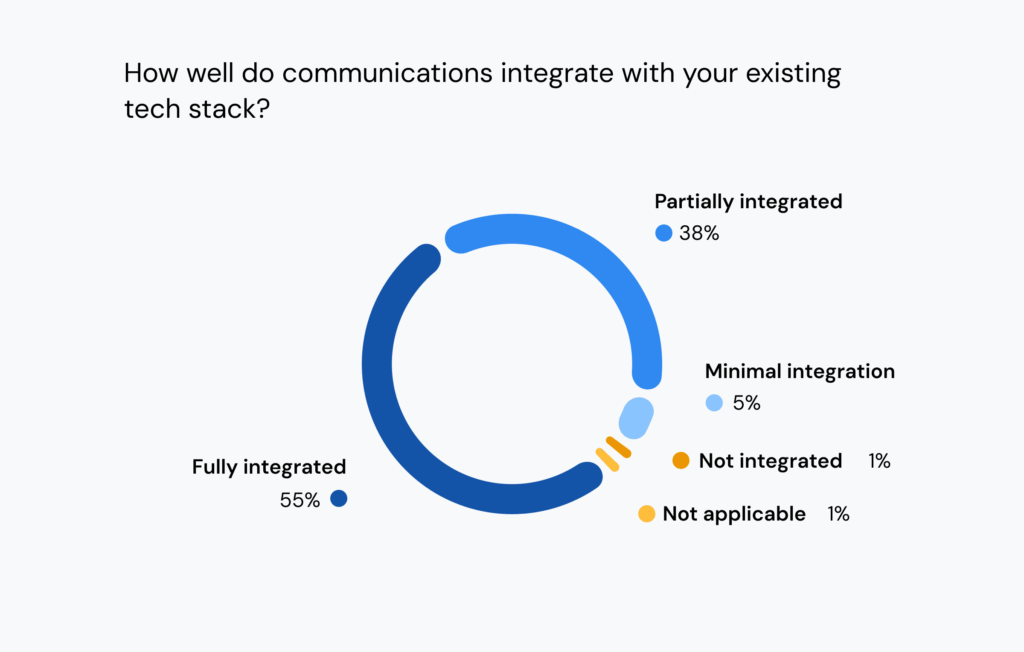
Mailgun helps close the gap without demanding a full rebuild. You can plug email directly into your CRM, ecommerce stack, or support systems without overhauling everything else. With robust APIs, SDKs, and native integrations, it’s easy to make email part of your stack.
“I wrote your code five years ago, and I don’t think I’ve touched it since.”

So, what’s the takeaway for 2025? Email isn’t going anywhere, but how you use it will make or break your results.
As we’ve seen, the year has already brought fresh challenges. Trust is fragile, channels are multiplying, and expectations are rising. But with the right foundation, email can still be your most powerful lever.
Here’s what winning programs have in common:
That’s what Mailgun was built for.
The 2025 state of customer communications report shares insights from 2,800 consumers and 1,600 business leaders, all pointing to one thing: Better communication keeps customers engaged, informed, safe, and happy.
Want to see how your approach stacks up, and where it can be improved?